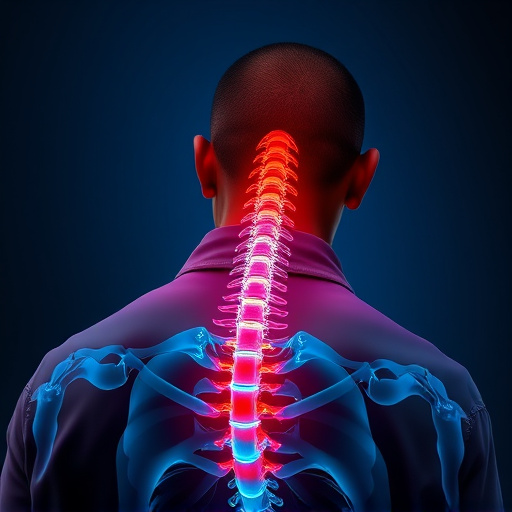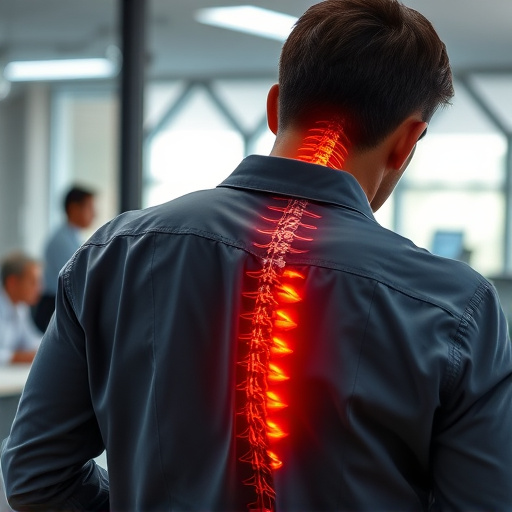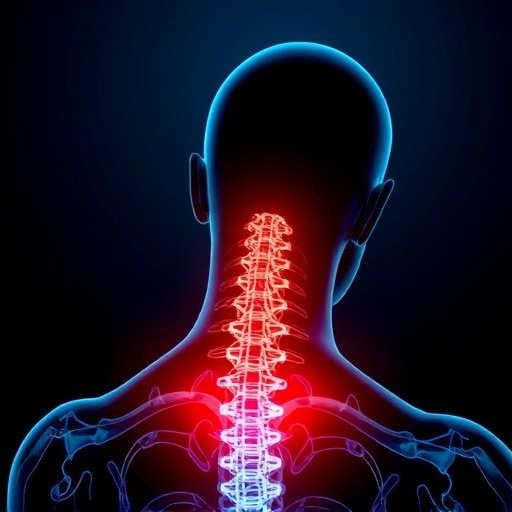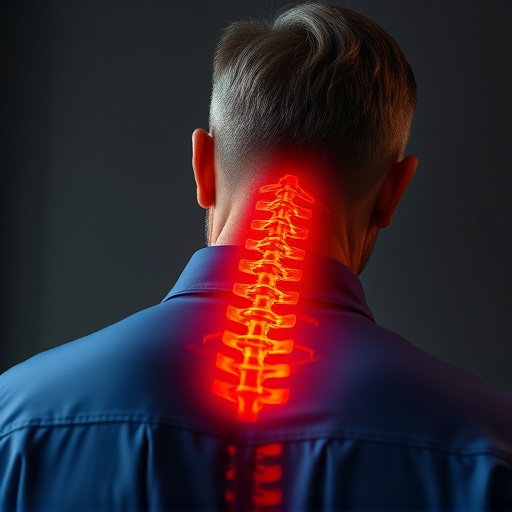Neck and back pain is a prevalent issue with multiple causes, including poor posture, muscular strain, repetitive movements, stress, anxiety, and medical conditions. Long-term relief requires understanding these triggers and often involves specialized care for chronic cases. Lifestyle modifications like exercise, balanced diet, and stress management techniques are effective solutions. Non-pharmacological treatments such as acupuncture, chiropractic care, and physical therapy gain popularity. An integrative approach combining modern medicine with holistic practices, including yoga and meditation, offers tailored treatment plans for improved quality of life. Regular exercise, stress reduction, and professional consultation are key to achieving and maintaining lasting neck and back pain relief.
“Experience lasting neck and back pain relief with our comprehensive guide. Delve into understanding the root causes, from posture to stress, that trigger chronic discomfort. Explore lifestyle modifications and non-pharmacological treatments, such as exercise and holistic practices, for effective long-term solutions. Learn how integrative approaches combine modern medicine with alternative therapies, offering a sustainable plan for ongoing pain management. Achieve relief and reclaim your life today.”
- Understanding Neck and Back Pain: Causes and Common Triggers
- Lifestyle Modifications for Long-Term Pain Relief
- Non-Pharmacological Treatments: Exploring Alternative Therapies
- The Role of Exercise in Managing Chronic Neck and Back Pain
- Integrative Approaches: Combining Modern Medicine with Holistic Practices
- Building a Sustainable Plan for Ongoing Pain Management
Understanding Neck and Back Pain: Causes and Common Triggers
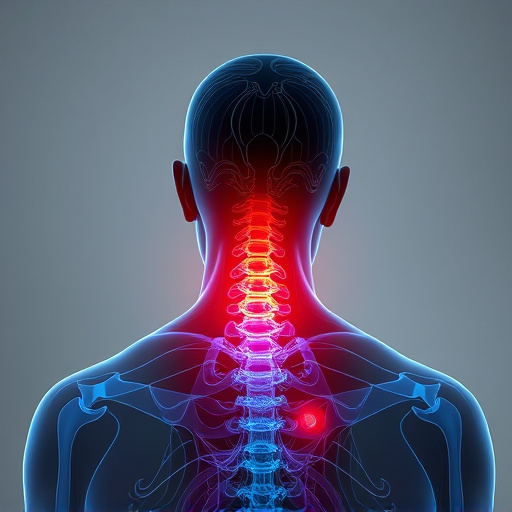
Neck and back pain is a prevalent issue affecting people from all walks of life, impacting their daily activities and overall quality of life. Understanding the causes and triggers behind these persistent aches is a crucial step towards effective long-term neck and back pain relief. Many factors can contribute to the development of this type of pain, including poor posture, muscular strain, or even underlying medical conditions.
Common triggers often involve repetitive movements, such as prolonged sitting or lifting heavy objects improperly. Stress and anxiety can also play a significant role in tightening muscles, leading to increased tension and discomfort. Additionally, certain conditions like arthritis, herniated discs, or spinal stenosis may cause chronic neck and back pain, requiring specialized care for effective management and relief.
Lifestyle Modifications for Long-Term Pain Relief
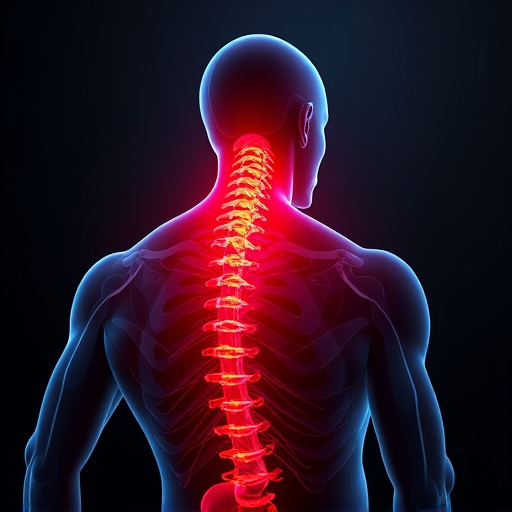
Many people suffering from chronic neck and back pain often overlook the power of lifestyle modifications as a long-term pain management solution. Simple changes in daily routines can significantly reduce discomfort and improve overall well-being. Regular exercise, for instance, strengthens muscles supporting the spine, enhancing posture and flexibility. Activities like swimming or yoga are particularly beneficial as they promote movement without putting excessive strain on the neck and back.
Additionally, maintaining a healthy weight is crucial for achieving neck and back pain relief. Carrying excess weight places extra pressure on the musculoskeletal system, exacerbating pain. Adopting a balanced diet and engaging in regular physical activity can help manage weight, reducing the risk of injury and minimizing stress on the spine. Moreover, managing stress through relaxation techniques like meditation or deep breathing exercises can also be effective in alleviating chronic pain.
Non-Pharmacological Treatments: Exploring Alternative Therapies
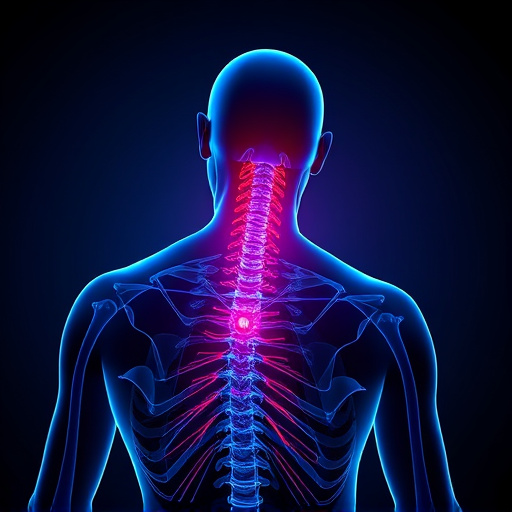
Many people struggling with persistent neck and back pain often turn to non-pharmacological treatments, embracing alternative therapies that go beyond conventional medications. These approaches acknowledge the mind-body connection and aim to provide lasting relief by addressing various aspects of an individual’s well-being. Techniques such as acupuncture, chiropractic care, and physical therapy have gained popularity due to their effectiveness in managing pain without relying solely on drugs.
Acupuncture, for instance, involves inserting thin needles at specific points to stimulate natural healing responses, offering a non-invasive way to alleviate chronic pain. Chiropractic care focuses on the body’s structural integrity, using adjustments to improve alignment and reduce pain signals. Physical therapy enhances flexibility, strengthens muscles, and teaches individuals coping strategies to manage their pain effectively over time. These alternative therapies provide a holistic approach to neck and back pain relief, catering to those seeking long-term solutions beyond conventional pharmaceutical interventions.
The Role of Exercise in Managing Chronic Neck and Back Pain
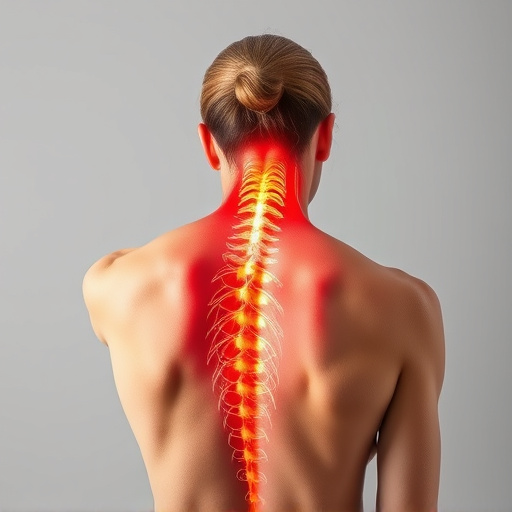
Chronic neck and back pain can significantly impact an individual’s quality of life, but exercise plays a pivotal role in managing this condition. Regular physical activity helps strengthen muscles supporting the spine, improving posture and flexibility. This reduction in muscle tension and improved alignment can alleviate pressure on nerves, leading to significant neck and back pain relief.
Moreover, specific exercises tailored for the affected areas can restore range of motion and reduce inflammation. Activities like swimming, yoga, and Pilates have been shown to be particularly effective due to their low-impact nature, allowing individuals to stretch and strengthen without exacerbating pain. These exercises also promote mental well-being, as they encourage mindfulness and relaxation techniques that complement traditional pain management strategies for sustained neck and back pain relief.
Integrative Approaches: Combining Modern Medicine with Holistic Practices
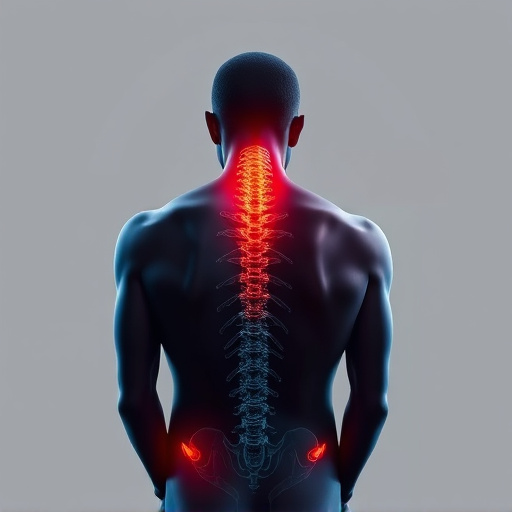
In the quest for long-term neck and back pain relief, an integrative approach that blends modern medicine with holistic practices offers a promising path. This strategy recognizes the complex nature of chronic pain, addressing not just symptoms but also the underlying causes. By combining evidence-based medical treatments with complementary therapies like acupuncture, chiropractic care, yoga, and meditation, patients can achieve more comprehensive and sustainable results.
Modern medicine provides powerful tools for diagnosing and managing pain, such as pharmaceuticals and injections. Holistic practices, on the other hand, focus on promoting overall well-being through natural means. This integration allows for a tailored approach that considers not just the physical aspects of pain but also its psychological and emotional components. Consequently, patients often experience improved quality of life, better coping mechanisms, and enhanced resilience in managing their neck and back pain relief journey.
Building a Sustainable Plan for Ongoing Pain Management
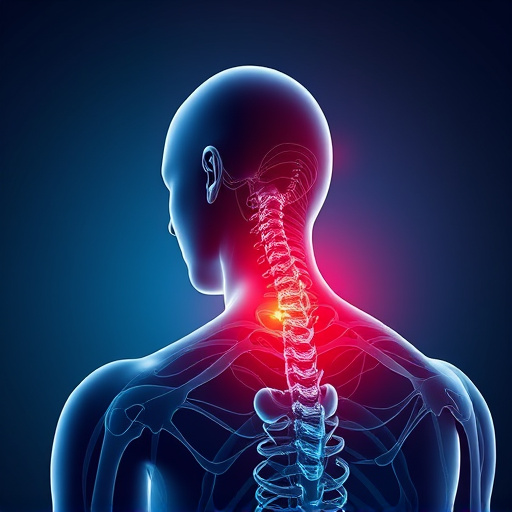
Building a sustainable plan for ongoing neck and back pain relief requires a holistic approach that combines various strategies tailored to individual needs. This involves not just treating symptoms but addressing underlying causes, adopting healthier lifestyle habits, and incorporating coping mechanisms into daily routines. Regular exercise, such as yoga or swimming, can significantly improve flexibility and strengthen muscles supporting the spine, providing long-lasting neck and back pain relief.
Additionally, integrating stress management techniques, like meditation or deep breathing exercises, can help alleviate tension that often exacerbates pain. Consulting healthcare professionals, including physical therapists and psychologists, plays a crucial role in developing this comprehensive plan. They offer guidance on specific exercises, therapy options, and mental health support necessary for effective, enduring neck and back pain relief.








